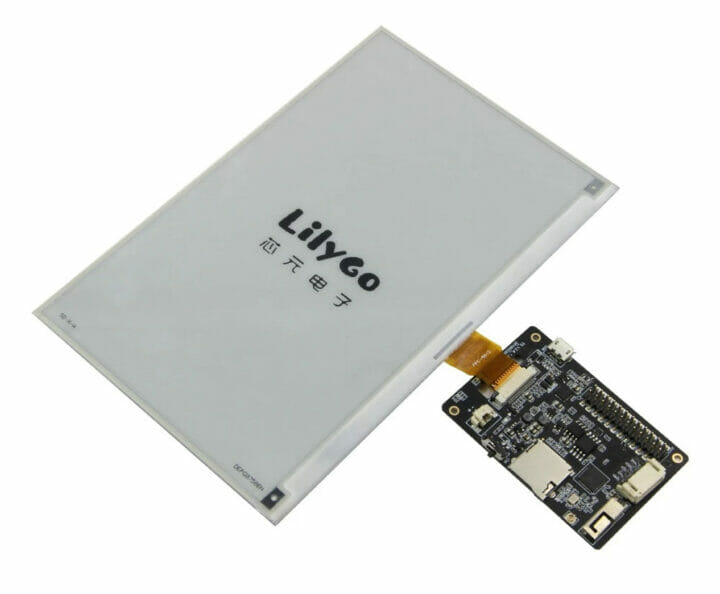Devices/Embedded: Arduino, Banana Pi, Raspberry Pi, and SkyWater

-
$52 7.5-inch E-paper display connects to ESP32 boards
So far LILYGO’s ESP32 boards with an E-Paper display such as the TTGO T5 or Mini E-Paper Core featured smaller displays from 1.02-inch to 2.9-inch. But the company is now offering a larger 7.5-inch display that works with most of its T5 boards excluding the one used with a 4.7-inch display.
The black and white e-paper display offers a resolution of 800 x 480 pixels, is Arduino programmable and backward compatible with earlier T5 E-paper solution, and should be one of the most cost-effective to way to make a wireless E-paper display.
-
BPI-Bit Lite is an educational board that runs on Arduino, Webduino and MicroPython
The Banana Pi BPI-Bit Lite is a development board following the BPI-Bit. This tiny device is powered by the ESP32-S3 from Espressif and it features Goldfingers I/O connectors.
The microprocessor found on this device is the Xtensa Single-Core 32-bit LX7 with maximum frequency of 240MHz. Unlike the previous model, the BPI-Bit Lite includes 2048KB of PSRAM but it has less ROM (128KB) and RAM (320KB).
-
Self-Hosted Pi Pico Development
Older readers and those with an interest in retrocomputing may remember the days when a computer might well have booted into a BASIC interpreter. It was simultaneously a general purpose device that could run any software it would load, and also a development environment. Not something that can be said for today’s development boards which typically require a host computer on which to write code. Have we lost something along the way? Perhaps an answer to that question can be found in [lurk101]’s self-hosted development environment for the Raspberry Pi Pico.
-
US DoD funds Google and SkyWater to enable open-source chips • The Register
Google has linked up with chip fabrication company, SkyWater Technology, on an open source chip technology program with funding from the US Department of Defense (DoD) to build a reliable source of components for defense applications.
SkyWater announced it has received $15 million in funding from the DoD to develop open source design capabilities for its 90nm production process. To enable this, the company has turned to Google to provide the compute resources and other expertise to realize the project.
It seems the pair have some history in this respect, with Google working with US-investor-owned SkyWater in 2020 to enable open source design of custom ASICs to be manufactured on its 130nm mixed-signal CMOS process.
